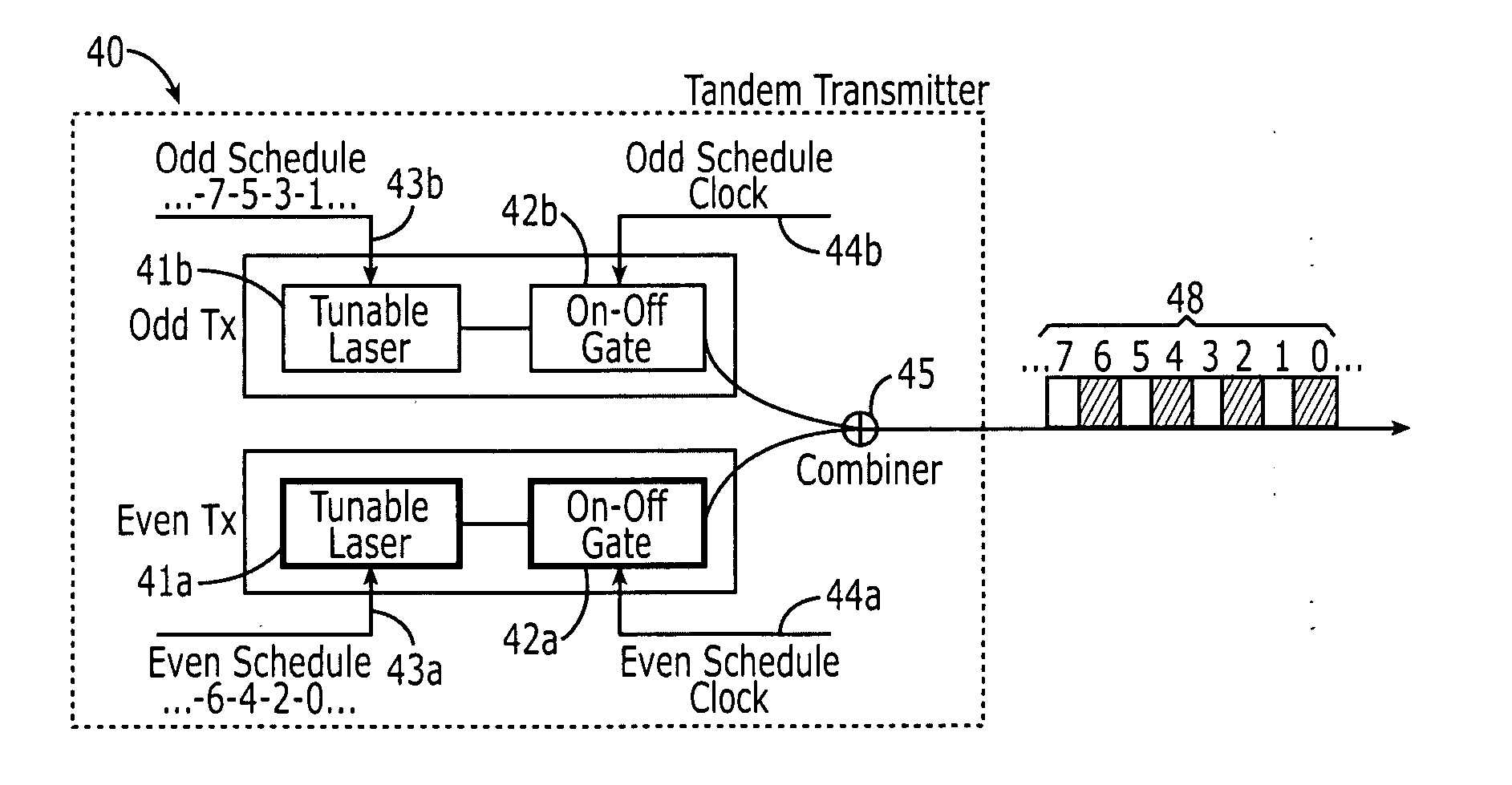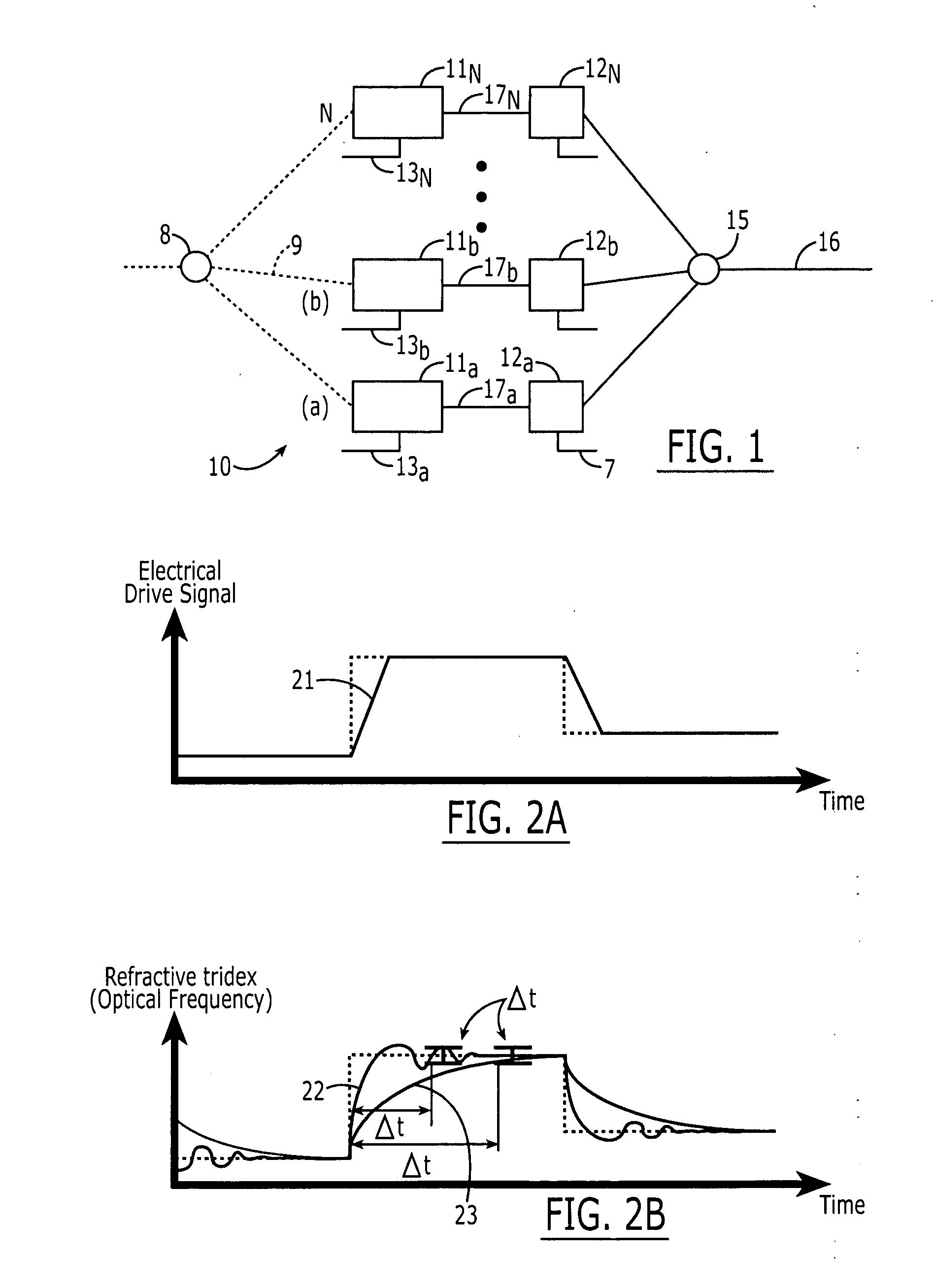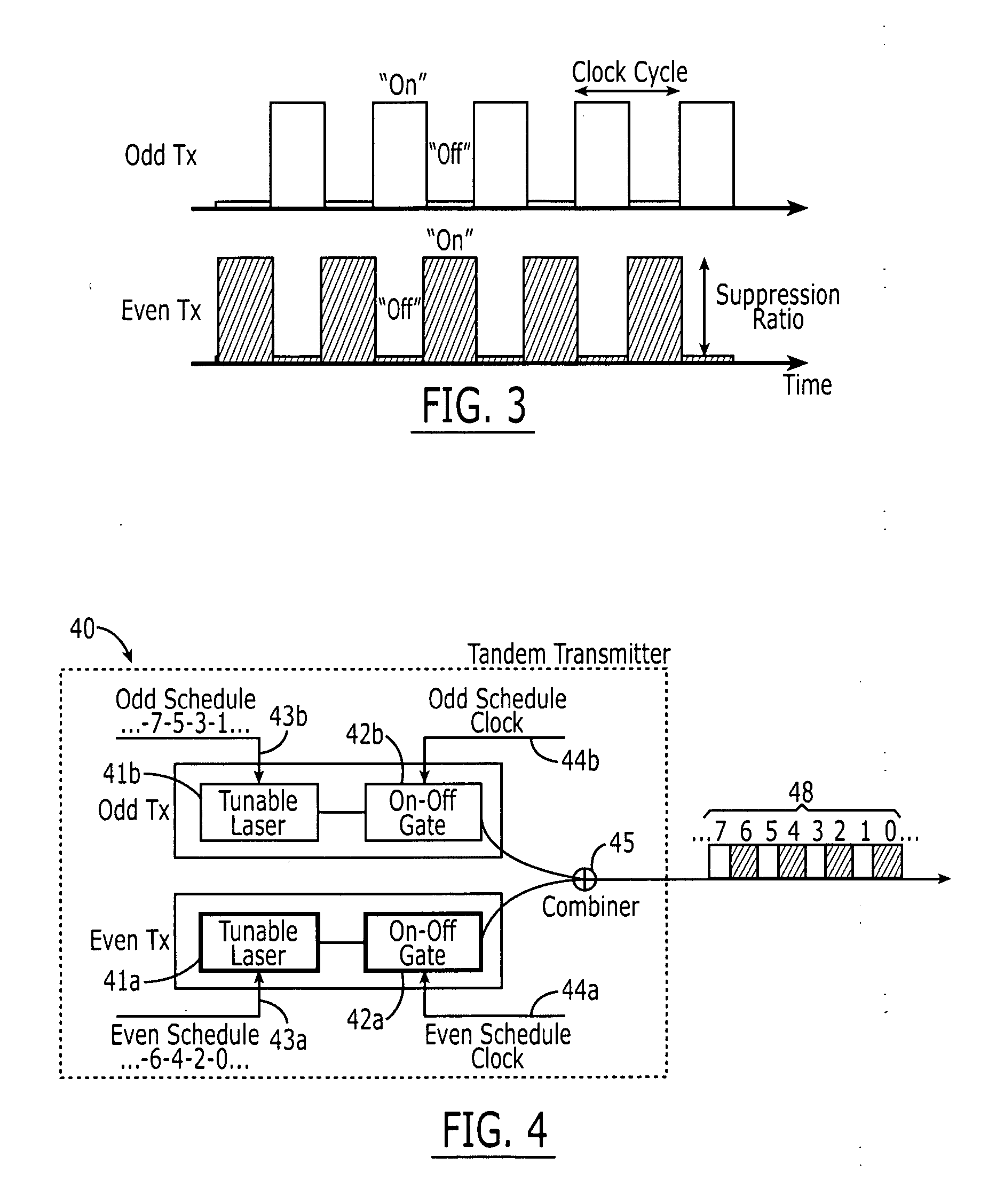Optical time division multiplexer
a time division multiplexer and optical signal technology, applied in the field of optical time division multiplexers, can solve the problems of compromising the speed at which the tdm switches or the quality of the outputted signal
- Summary
- Abstract
- Description
- Claims
- Application Information
AI Technical Summary
Benefits of technology
Problems solved by technology
Method used
Image
Examples
Embodiment Construction
[0018] Referring to FIG. 1, a preferred embodiment of an N:1 time division multiplexer (TDM) 10 of the present invention is shown. The TDM 10 comprises N sets of wavelength-tunable devices 11a, 11b . . . 11N in tandem with gates 12a, 12b . . . 12N in which N is 2 or greater. Each wavelength-tunable device 11a, 11b . . . 11N is adapted to output a signal 17a, 17b . . . 17N having a wavelength which is adjustable in response to a change signal 13a, 13b . . . 13N, respectively. One on-off gate is coupled to the output of each wavelength-tunable device. For example, as shown in FIG. 1, gate 12a is coupled to the output of wavelength-tunable device 11a, and gate 12b is coupled to the output of wavelength-tunable device 12a. When a gate is on, the signal of its respective wavelength-tunable device passes through, and, when it is off, the signal of its respective wavelength-tunable device does not pass through. The gates are configured such that a gate is switched off when its respective w...
PUM
 Login to View More
Login to View More Abstract
Description
Claims
Application Information
 Login to View More
Login to View More - R&D
- Intellectual Property
- Life Sciences
- Materials
- Tech Scout
- Unparalleled Data Quality
- Higher Quality Content
- 60% Fewer Hallucinations
Browse by: Latest US Patents, China's latest patents, Technical Efficacy Thesaurus, Application Domain, Technology Topic, Popular Technical Reports.
© 2025 PatSnap. All rights reserved.Legal|Privacy policy|Modern Slavery Act Transparency Statement|Sitemap|About US| Contact US: help@patsnap.com



